Can Yoyo, a Pay-Per-Mile Car Subscription, Shake up the Mobility Landscape?

Yoyo believes, like other mobility disruptors, that the traditional automobile acquisition and ownership experience is broken. It maintains that the majority of consumers can be provided with more flexible, efficient, lower-cost alternatives to the incumbent model of personal mobility. However, the prevailing two-step distribution system is entrenched and the insurance, maintenance, parking, and other segments of the $2 trillion extended auto industry are not incentivized to embrace change.
Will Yoyo’s pay-per-mile subscription model participate in disrupting the calcified status quo?
WHAT’S WRONG WITH THE STATUS QUO
I love driving. I love having a car that’s mine, ready whenever I want, with my stuff in it. And I love that I can modify it however I like. There are exactly zero alternatives to the status quo that efficiently address my needs. And I understand that much like a golfer, wine enthusiast, or travel addict, I pay a premium for my passion. But let’s be clear, neither Yoyo nor the other mobility disruptors are aimed at we passionate few. They are targeting the other 200 million licensed drivers in America.
Many retail sectors have been disrupted and some improved over the last two decades, but not those surrounding personal mobility. Owning or leasing a car is generally time and capital inefficient and in numerous respects, unpleasant. The vehicle acquisition experience is so terrible that a 2015 Autotrader study of 4,000 active car shoppers found less than 1 percent enjoy the car buying experience.
Even the research phase of vehicle acquisition could be improved. Information asymmetries abound. Insurance, for example, is a classic David versus Goliath exercise in which consumers operate with limited information and insurers maintain robust pricing power. The maintenance and repair industry is perhaps more predatory than auto retail. And there is the stressful unpleasantness associated with the end of each ownership cycle — sell, trade, donate…?
Individually owned vehicles have an exceedingly inefficient utilization rate of just 4 percent, versus 35 percent or more for livery vehicles. Moreover, most privately owned vehicles are sub-optimal for the majority of tasks they perform. Do we need or want a three-row SUV for our daily commute? No, but we “buy up” to ensure our vehicle meets our lowest common detonator of use.
As Hari Iyer, co-founder of Yoyo explained, “Consumers utilize their cars in fractions (daily commute, one seat occupied), but they purchase in whole numbers (one vehicle, two vehicles), and they often round up (three-row SUV or double cab half-ton pickup).” Consumers thus cover 99 percent of their personal use-cases with one, two, or three vehicles, but as a result they live with and pay for a product that over delivers on the vast majority of their operating requirements, on the rare occasions it is in use.
According to the Bureau of Labor Statistics, the average American adult spent $9,500 on personal transportation in 2015, second only to their housing expense. The high level of resources we allocate to mobility reflects the car-centric economy we began creating in the 1920s, committed to in the postwar period, and which has only recently shown signs of weakening. One contributing factor is America’s increasing density. The urbanization rate has increased from 70 percent in 1960 to over 80 percent today. Nominally, that equates to a doubling of the urban population, from 126 to 247 million people. And increasing population density is pivotal for the future of mobility, because it facilitates the rise of alternatives to personal vehicle ownership. Public transit becomes more efficient and disruptors, like Yoyo, enjoy a larger addressable market across which they have a better opportunity to earn the critical mass of users required for their solutions to become economically viable.
After 100 years of training, most of us are not wired to consider our personal commitment to driving on a cost per mile basis. That would require us to know our total cost of ownership, as well as the number of miles we drive. Here’s a shortcut, according to AAA, a typical sedan owner who drives 15,000 miles per year (the national average for 30-49 year olds is 13,140 miles per year) spends $0.58 per mile, or $725 per month. SUV drivers pay about a 15-percent premium.
MOBILITY ALTERNATIVES
As the future of mobility unfolds, several visions are competing for our awareness, interest, and adoption. And like the ownership-centric, vehicle-bound economy we spent the last hundred years building, the future of mobility will be shaped largely by market forces. Some of today’s visionary disruptors will win and others will be forgotten. But given the diversity of our wants and needs combined with the complexity of mobility, no single solution or provider is likely to gain a monopolistic position. There will be room for multiple competitors satisfying a variety of consumer needs.
Tesla, Faraday Future, Atieva, Elio, and others are or will soon be selling cars direct to consumers, presumably improving the vehicle acquisition experience. The direct-to-consumer manufacturers do not, however, fundamentally alter the personal ownership model. Uber, Lyft, Zipcar, and others are providing alternatives to personal ownership. Each of their solutions addresses one or more of the vexing challenges facing consumers today such as insurance, maintenance, repair, and disposal. But none offer a comprehensive solution to the high-cost, inefficient status quo.
Autonomous vehicles will also play an important role in the future of mobility. Fortunately for Yoyo, and many other disruptors, their services can develop in tandem with self-driving cars. As autonomous vehicles gain consumer acceptance, Yoyo can simply add them to their fleet without diminishing the value proposition of their subscription-based service.
Anyone who has gone all-in on Uber or Lyft for 15,000 miles per year, is paying about $0.96 per mile, or $1,200 per month. For those living in hyper-dense parking-challenged environments, UberX may represent a better solution than traditional ownership, though Uber’s convenience fades the farther one travels from populated areas. For those using a car-sharing service, such as Zipcar, the cost approaches $1.50 per mile, making car sharing a better mobility supplement than a wholesale replacement.
YOYO VISION
Yoyo seeks to simultaneously engage the collection of disagreeable, expensive, time consuming, inefficient aspects of auto ownership with a pay-per-mile subscription service.
A Yoyo subscription works like this. A consumer signs up and pays an annual fee of about $100, which grants him/her anytime access to vehicles covering every reasonable use case. Electric vehicles, city cars, mid-size sedans, trucks, and SUVs from mainstream as well as premium brands will be available. They are split into three price tiers — $0.50, $0.75, and $1.00 per mile. A smart phone is used to beckon whatever vehicle a member wants whenever they want. Delivery and collection can be affected to or from a workplace, home, airport, etc. Members pay per mile with a minimum 30 miles per day averaged over a monthly or quarterly period, depending on membership level. For example, if one has a $0.50 per mile, tier-one Ford Focus for a full month, they will pay a minimum $450, regardless of if the vehicle is operated 0 miles, 30 miles each day, or 900 miles on a single day. Drive over 900 miles that month and simply pay the $0.50 rate per mile – no high mileage discounts, no high mileage penalties.
The economics of adopting Yoyo versus traditional private ownership boil down to a pair of factors. First, how much do you drive? The fewer miles one drives the more Yoyo makes sense from a purely economic perspective. If one drives fewer than 10,000 miles per year, they can almost certainly save by using Yoyo or another car share provider. Second, to what extent does one value access to dozens of different vehicles, always driving a relatively new vehicle, and avoiding the hassles and responsibilities of ownership?
A driver operating a variety of Yoyo’s tier-one $0.50 per mile vehicles, such as a Ford Focus, Jeep Wrangler, or Mini Cooper 15,000 miles per year, will spend $625 per month, about $100 less than the average sedan owner. But don’t forget to add the cost to fuel your Yoyo, which for a 25 mile per gallon car will be about $0.09 per mile, making the cost delta between traditional ownership and Yoyo too close to call.
Location and driver age will also factor into the likelihood that Yoyo will be a fit for you. The service is being piloted to a select user group in northern California now and the company has plans to roll it out soon across the largest 35 metro areas. When Deloitte Consulting was researching its recent white paper, The Future of Mobility, it found that millennials (born 1981-2000) value the vehicle purchase experience three times more than vehicle design. This underlines the preference among younger Americans for experiences over things, making them a key target demographic for Yoyo and other mobility disruptors.
Speaking of youth, if you are envisioning Yoyo as a gritty, bootstrapped, Shark Tank-ready start-up run by sleep deprived, ramen-fueled Millennials with brains sized to match their optimism, you have part of the picture. The Yoyo team is cost conscious, probably doesn’t sleep as much as it should, and has some serious brainpower. But if they were on Shark Tank, they would be sitting on the investor panel beside Mark Cuban, not across from him. In Silicon Valley, management teams and track records count for more than the brilliance of ideas. Teams and experience are the real currencies of start-ups and they go a great distance toward determining how much capital a start-up can raise and by extension how much time it will have to demonstrate the value of its idea. Yoyo has an experienced team and the resources, relationships, and vision to be patient.
The future of mobility is coming. How fast? Nobody knows, but shared mobility already has a place in the formula. Will Yoyo be one of the lucky few to find traction and help disrupt the status quo? I would not bet against them, but we need to play the game to find out.
[Image: General Motors]

Twenty year auto industry professional. Currently CEO at Turbo International, the premier American manufacturer of OEM replacement turbochargers for the global aftermarket.
More by Seth Parks
Latest Car Reviews
Read moreLatest Product Reviews
Read moreRecent Comments
- Justin You guys still looking for that sportbak? I just saw one on the Facebook marketplace in Arizona
- 28-Cars-Later I cannot remember what happens now, but there are whiteblocks in this period which develop a "tick" like sound which indicates they are toast (maybe head gasket?). Ten or so years ago I looked at an '03 or '04 S60 (I forget why) and I brought my Volvo indy along to tell me if it was worth my time - it ticked and that's when I learned this. This XC90 is probably worth about $300 as it sits, not kidding, and it will cost you conservatively $2500 for an engine swap (all the ones I see on car-part.com have north of 130K miles starting at $1,100 and that's not including freight to a shop, shop labor, other internals to do such as timing belt while engine out etc).
- 28-Cars-Later Ford reported it lost $132,000 for each of its 10,000 electric vehicles sold in the first quarter of 2024, according to CNN. The sales were down 20 percent from the first quarter of 2023 and would “drag down earnings for the company overall.”The losses include “hundreds of millions being spent on research and development of the next generation of EVs for Ford. Those investments are years away from paying off.” [if they ever are recouped] Ford is the only major carmaker breaking out EV numbers by themselves. But other marques likely suffer similar losses. https://www.zerohedge.com/political/fords-120000-loss-vehicle-shows-california-ev-goals-are-impossible Given these facts, how did Tesla ever produce anything in volume let alone profit?
- AZFelix Let's forego all of this dilly-dallying with autonomous cars and cut right to the chase and the only real solution.
- Zelgadis Elantra NLine in Lava Orange. I will never buy a dirty dishwater car again. I need color in my life.

















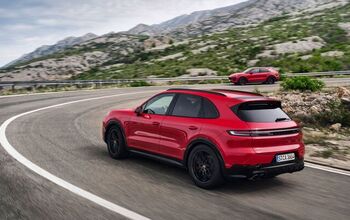
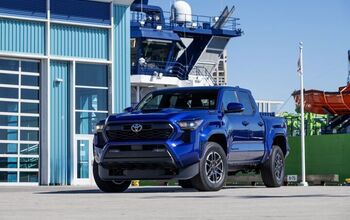
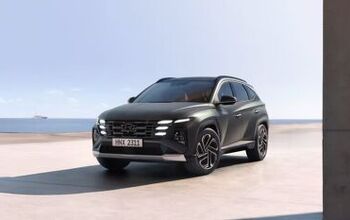
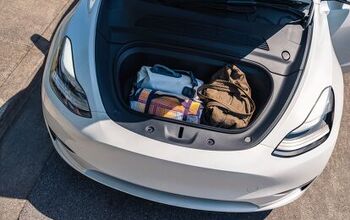

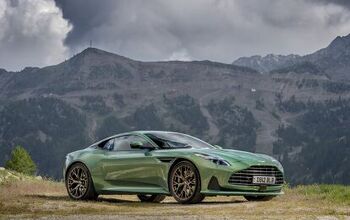
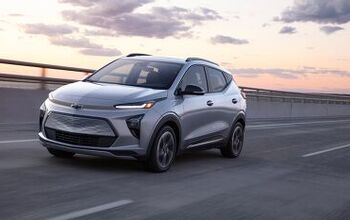
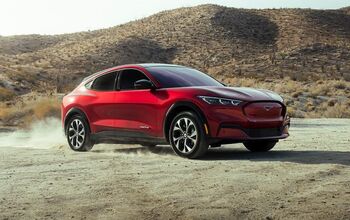
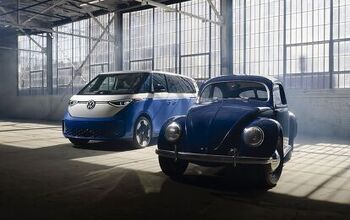
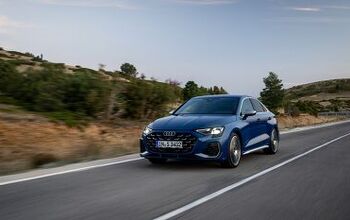
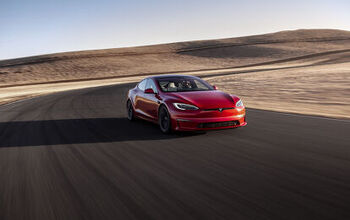
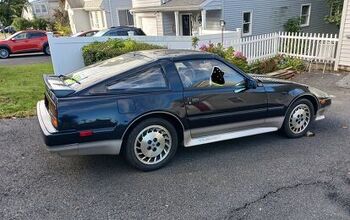
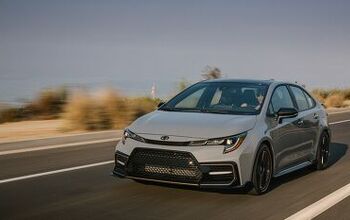

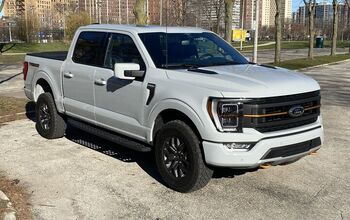
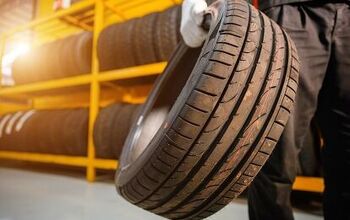
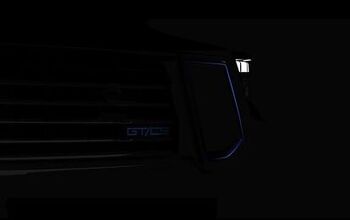
Comments
Join the conversation
I miss that days when RF imposed a strict length limit on postings. He also didn't allow quick rewrites of press releases :(.
This sentence is what really caught my attention, over the actual subject of the article : "The vehicle acquisition experience is so terrible that a 2015 Autotrader study of 4,000 active car shoppers found less than 1 percent enjoy the car buying experience." If you REALLY wanted to achieve 'mobility disruption', open a dealership where you post, in full public view, the actual retail price you paid for each vehicle on your lot. Show all of the rebates, discounts, kickbacks, etc. related to every one. Tell people you're running a business, not a charity, and show a reasonable profit margin tacked on to the final number. Let people who like negotiating do so on the trade-in value of their old car, not the price of the new car. Refuse to do any foolish financial chicanery or add-ons. I would think customers would be lined up around the block while other dealerships would resemble ghost towns. On the other hand...Saturn. Never mind.